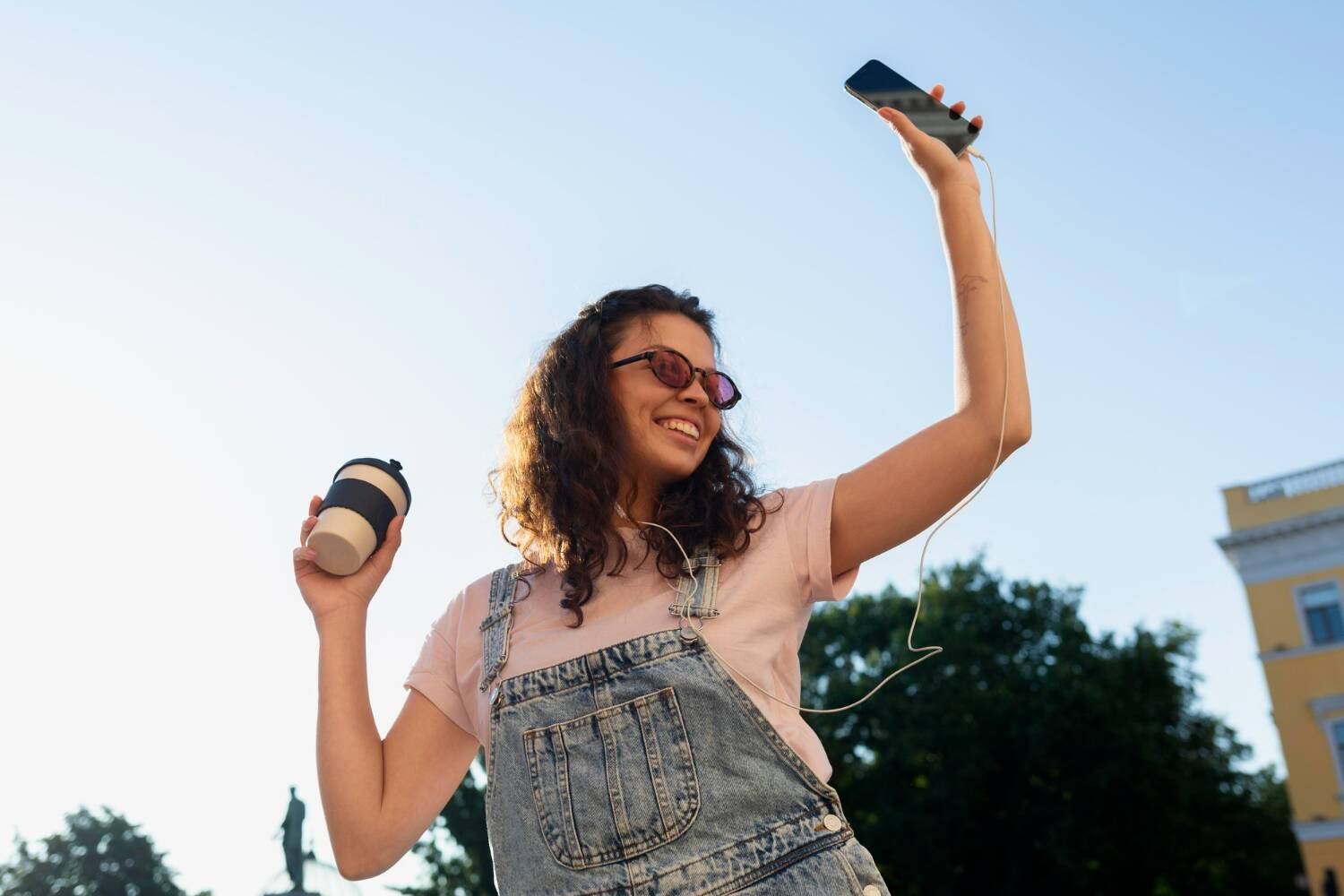
How to Say “Have a Good Day” in Spanish
DATE:
If you want to learn Spanish, you should know that it’s not just about learning spanish grammar rules. We must be able to maintain common and basic interactions with people, and know what are the most common manners.
It is normal that in another language we sound a bit more serious as our fluency may not be the same, and therefore we must learn good manners also in the language we are studying, such as learning how to say have a good day in spanish
We know that kindness is a universal virtue, and wishing another person a nice day will never go “out of style” since it is not a fashion, but a necessity to be a well-behaved and admirable person. That’s the importance of learning Spanish greetings!
Especially because for native speakers it is much more common to go around saying “buenos dias” o “buen día” to everyone, regardless of whether they know each other or not. And it always comes with a smile.
Saying in English “have a good day” is pretty simple, but in Spanish, there are many different ways to say it, so we are going to review the most popular and common ways phrases you can use to wish someone to have a good day in spanish.
Keep reading to learn more about the most essential have a good day in spanish phrases and practice them for your next Spanish conversations.
How To Say “Have A Good Day” In Spanish
As we said before, there are many different ways to wish someone to have a good day in Spanish. Of course, there is the most common way, which applies to both informal and formal contexts, just like “have a good day” in English.
“Have a good day” in Spanish is translated as “ten un buen día” or “que tengas un buen día”. So this is the main and most common option.
If you learn how to say “good day” in Spanish, remember to also learn how to say “good night”. So don’t hesitate to learn more spanish vocabulary and read How To Say Good Night In Spanish.
Let’s keep in mind that, as in English, “have a good day” is not the same as “good morning” even though they have very similar meanings. The direct translation of “Good morning” in Spanish is “buenos días“ and has the same use as in English: to greet someone cordially in the morning.

Different Ways To Say “Have a Good Day” in Spanish
Now, if you want to wish your Spanish-speaking friend a to have a good day in spanish without just saying “que tengas un buen día” here are some alternatives and most common phrases that have the same usage and are a little different. Try to practice with some of them!
1. Buen día
It is the shortened version of wishing someone a to have a good day in spanish, and translates directly as “good day”.
2. ¡Que tengas un bonito día!
It is a form of “¡que tengas buen día!” So, it is also another popular way of saying “que tengas un buen día” (have a nice day) in Spanish. While both of these expressions are very educated, “¡que tengas un bonito día!” is a bit more casual and involves more familiarity between speakers. Spanish natives sometimes use a shortened version: “que tengas bonito día” (without “un”). Remember to change to the plural form if you are talking to more than one person. You can say “que tengan un bonito día” or “que tengan un buen día”.
Most of these verbs use the verb tener in Spanish. So learn how to conjugate this verb with this wonderful guide! The verb “tener” is one of the most important verbs in Spanish.
3. Que te vaya bien
“Que te vaya bien” is a phrase that has multiple meanings. For example, we could say that it means ” Go well” or “Have a nice day”, or even “Take care”, as well as “Good luck” and “See you”. In short, “que te vaya bien” is a very usable phrase, as it summarizes different ways of saying ” Good day” to someone. If you want to say it in a more formal context, you can say “que le vaya bien”.
4. Pásala bien
This is a commonly used expression to say have a nice day in Spanish. In Spanish, it means something like ” have a good time”, therefore we should only use this phrase if the person we are saying goodbye to is going to an event.
When someone is going to a party, birthday, or even just for a ride, for example, people often say “¡Pásala bien!”. Also is an expression very similar to “que te vaya bien”.
5. Qué estés bien
It is a phrase that sounds informal and friendly. When translated into English, you get “hope you do well” so you can tell that you are not wishing the other person a good day as such, but for native Spanish speakers it is the same thing, you are just saying that you wish them well for the day. It is very similar to “que te vaya bien”.
6. Feliz dia
It’s a slightly more formal (though it may not seem like it) way of wishing someone to have a good day in spanish. It literally translates as “happy day” but actually has the same meaning as “good day”.
It is also the basis of a day where something is celebrated, for example, ” feliz día de las madres” so you can also use it as a short way of wishing someone a happy day when they celebrate something.
For example “Hola mamá, feliz día” (for mother’s day) but you can also say it in a casual way, to say hello.

Morning Phrases In Spanish
It’s time to learn not only how to say good morning, but also how to start a conversation in the morning. Do you want to ask the person what he/she will do during the day? How did he/she sleep? What will he/she have for breakfast?
In Spanish, there are many questions and phrases that will help you have a conversation in the early hours of the day. Here are the most common ones.
|
Spanish |
English |
|---|---|
|
¿Ya desayunaste? |
Have you had breakfast? |
|
¿A qué hora despertaste? |
What time did you wake up? |
|
¿Qué desayunaste? |
What did you have for breakfast? |
|
Es hora de despertar |
It’s time to wake up |
|
¿Cómo dormiste? |
How did you sleep? |
|
¿Dormiste bien? |
Did you sleep well? |
|
¿Qué harás hoy? |
What are you doing today? |
|
¿Qué quieres desayunar? |
What do you want for breakfast? |
|
Debo irme a clases. |
I have to go to class. |
|
Debo irme al trabajo. |
I have to go to work. |

Flirty Good Day In Spanish
To wish your Spanish-speaking flirt a good day, don’t lag behind and try these phrases. Spanish speakers are quite sweet and flirtatious, and they appreciate it if you say good day to them in a romantic way too (as long as you know that your love is reciprocated).
Just add a few sweet words after wishing a good day, as follows
|
Spanish |
English |
|---|---|
|
Buen día, mi amor |
Good day, my love |
|
Buen día, hermosa |
Good day, beautiful |
|
Buen día, cariño |
Good day, honey |
|
Buen día, mi corazón |
Good day, my heart |
|
Buen día, bebé |
Good day, baby |
|
Buen día, mi corazón |
Good day, my heart |
|
Buen día, guapo |
Good day, handsome |
|
Buen día, princesa |
Good day, princess |
|
Buen día, príncipe |
Good day, prince |
Vocabulary For Day and Morning In Spanish
Now let’s learn some words related to the morning in Spanish, to expand our vocabulary so that talking about topics that are talked about in the morning is not a problem for you. Let’s see!
|
Spanish |
English |
|---|---|
|
Wake up | |
|
Desayuno |
Breakfast |
|
Cepillarse los dientes |
Brushing teeth |
|
Lavarse la cara |
Wash face |
|
Ir a la escuela |
Go to school |
|
Ir al trabajo |
Go to work |
|
Quedarse dormido |
Oversleep |
|
Alarma para despertar |
Wake-up alarm |
|
Taza de café |
Cup of coffee |
Always remember to say thank you when you are complimented or wished a happy day. A “gracias” or “muchas gracias” never hurts.
Are You Ready To Say Buen día?
Thanks to this reading you can now start wishing a good day in the Spanish language. Just like saying Good afternoon or Good night, a “Buen día” makes you a better-educated person and can be worthy of much more than a simple greeting. And using any of the phrases you have learned here, you can begin using your intermediate and advanced language skills.
So from now on, knowing the different ways to say good day, it’s time to start practicing them! Keep in mind that you can use them whenever you are going to say hello in Spanish to someone in the morning.
Remember to check out our different Spanish blogs that will help you in your daily interactions thanks to widely used content that will help you get along better during the day with your Spanish-speaking friends!
And if you want to start formalizing your language learning, remember that the best way is to do it with professional native teachers who will help you make your learning process much easier, faster, and more effective.
Start today by trying a free 1:1 class or free 7 days of group classes and discover why the SpanishVIP methodology is so successful for hundreds of students!








